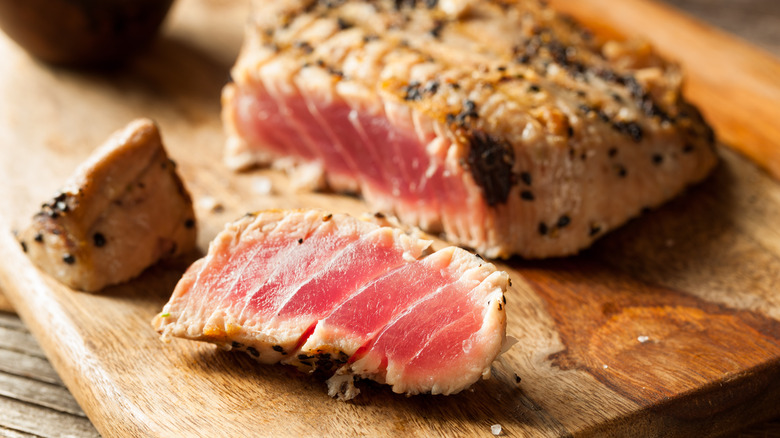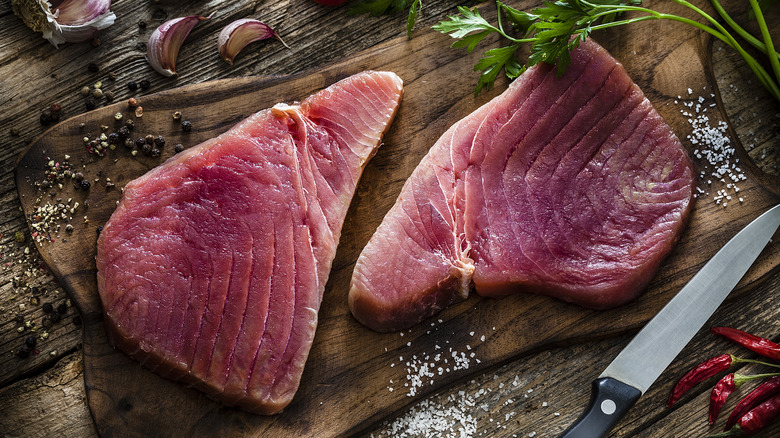What Is Considered Too Rare For A Tuna Steak?
If you've ever ordered a medium steak and received something dripping and bloodier than you intended, you know how disappointing it can be to eat an undercooked dinner. But while the levels of "doneness" for beefsteak are fairly well-known, identifying these markers for tuna steaks can get a bit murkier. Luckily, there are a couple easy ways you can tell if yours is still too rare to pull off the heat.
The quickest way to determine if your tuna needs some more time to sear is to look at the color. The raw fish will be a pinkish-red color with visible lines throughout, while the cooked parts will appear "meatier," and anywhere from white to light brown. If your slab is still bright on the outside, it's typically too rare for a tuna steak. But just like with beef, you can also whip out your meat thermometer to get a more accurate reading. The correct temperature for cooking tuna steak ranges from 65 to 118 degrees Fahrenheit. But remember that since the fish will continue cooking even after it's off the stove, you may want to err on the lower end. Anything under 65 degrees, however, is too rare for a typical tuna steak.
Tuna steaks are a speedy option
If 65 degrees Fahrenheit sounds pretty low for a cooked protein, it's worth noting that the U.S. Food & Drug Administration (FDA) advises cooking most fish to an internal temperature of 145 degrees Fahrenheit. However, tuna is one of the safest varieties to eat with a rare center, as long as it's frozen ahead of time, which can eliminate many of the parasites that could cause food-borne illness. And yet, it's still important to get high-quality fish for your steaks — and to check for any signs that they've gone bad before you fire up the stove or grill. While a little fishy smell is natural, it should be very subtle in a fresh piece, and the texture should be succulent and bouncy, but not overly wet. And while a seared exterior and a rare center undoubtedly makes for the tastiest tuna steaks, it's still important to keep in mind that there are some risks associated with eating them this way.
Once you've secured a high-quality piece of fish, make sure to find the sweet spot between too-rare and overdone. It only takes about three minutes max to achieve this at high heat, so keep a close eye on your tuna and yank it off the stove when the pink has fully left the outsides. And like we mentioned, it'll continue cooking even when it's off the heat, so let the tuna rest for a few minutes before slicing it up.

